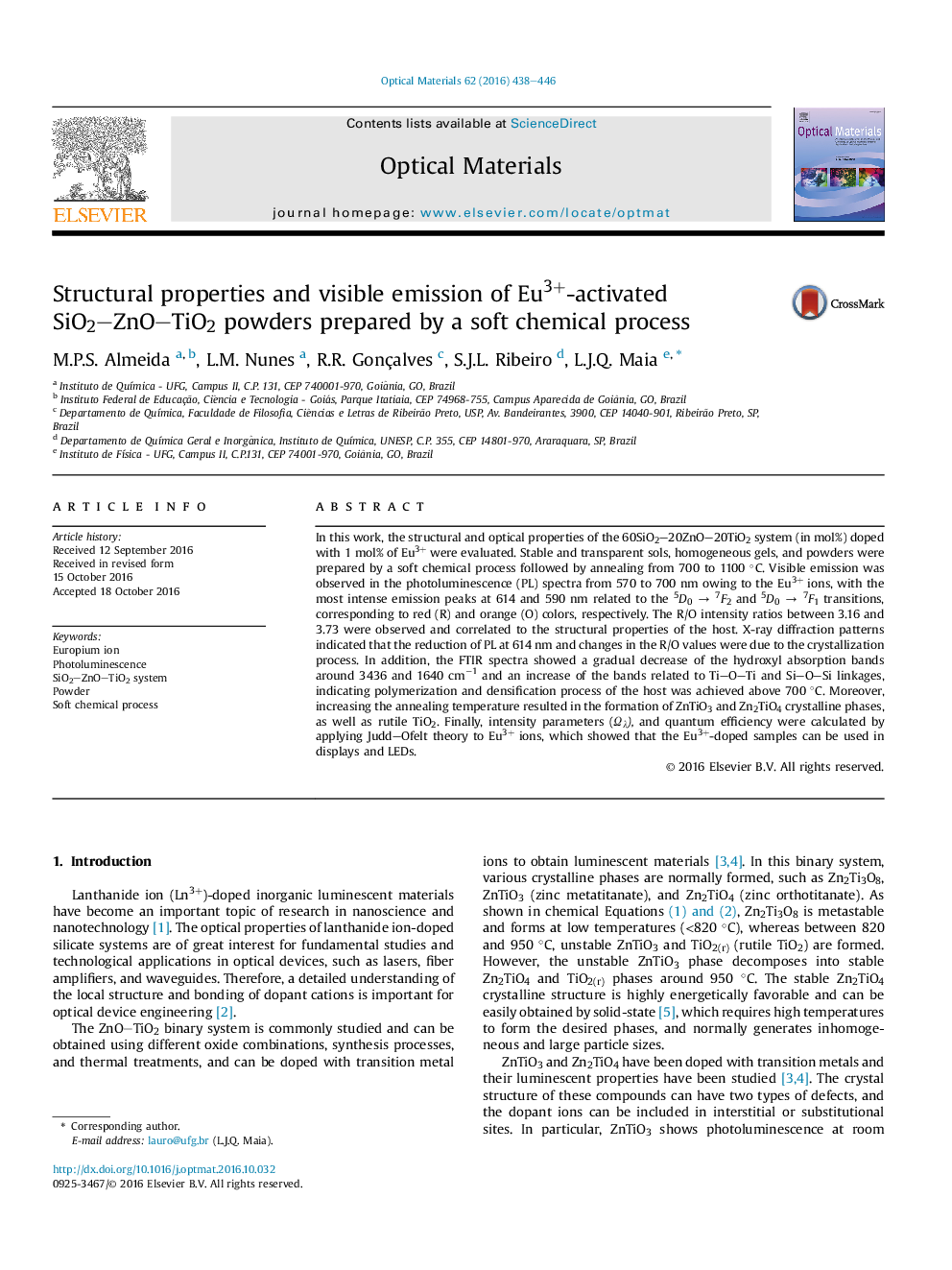| Article ID | Journal | Published Year | Pages | File Type |
|---|---|---|---|---|
| 5443062 | Optical Materials | 2016 | 9 Pages |
Abstract
In this work, the structural and optical properties of the 60SiO2-20ZnO-20TiO2 system (in mol%) doped with 1 mol% of Eu3+ were evaluated. Stable and transparent sols, homogeneous gels, and powders were prepared by a soft chemical process followed by annealing from 700 to 1100 °C. Visible emission was observed in the photoluminescence (PL) spectra from 570 to 700 nm owing to the Eu3+ ions, with the most intense emission peaks at 614 and 590 nm related to the 5D0 â 7F2 and 5D0 â 7F1 transitions, corresponding to red (R) and orange (O) colors, respectively. The R/O intensity ratios between 3.16 and 3.73 were observed and correlated to the structural properties of the host. X-ray diffraction patterns indicated that the reduction of PL at 614 nm and changes in the R/O values were due to the crystallization process. In addition, the FTIR spectra showed a gradual decrease of the hydroxyl absorption bands around 3436 and 1640 cmâ1 and an increase of the bands related to Ti-O-Ti and Si-O-Si linkages, indicating polymerization and densification process of the host was achieved above 700 °C. Moreover, increasing the annealing temperature resulted in the formation of ZnTiO3 and Zn2TiO4 crystalline phases, as well as rutile TiO2. Finally, intensity parameters (Ωλ), and quantum efficiency were calculated by applying Judd-Ofelt theory to Eu3+ ions, which showed that the Eu3+-doped samples can be used in displays and LEDs.
Keywords
Related Topics
Physical Sciences and Engineering
Materials Science
Ceramics and Composites
Authors
M.P.S. Almeida, L.M. Nunes, R.R. Gonçalves, S.J.L. Ribeiro, L.J.Q. Maia,
